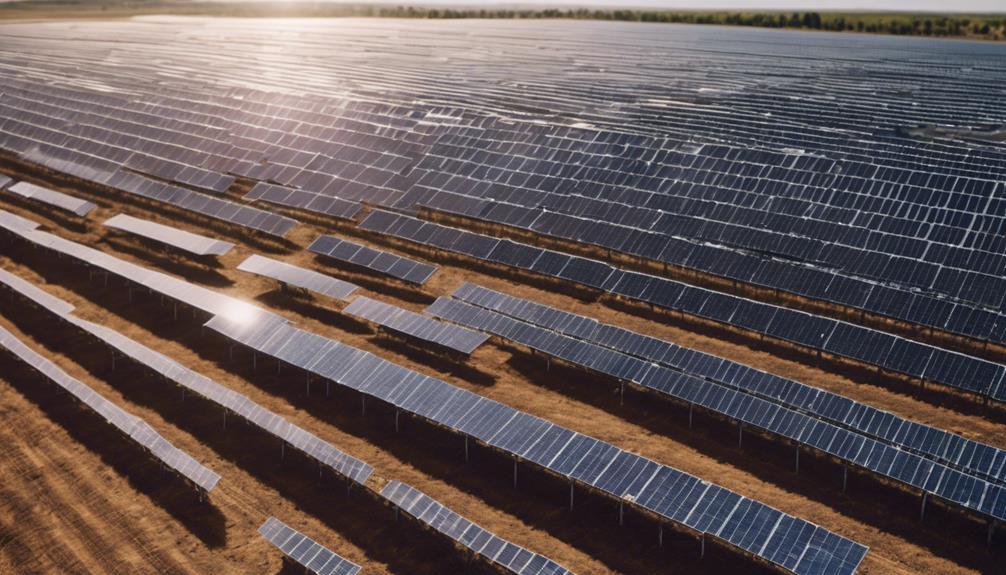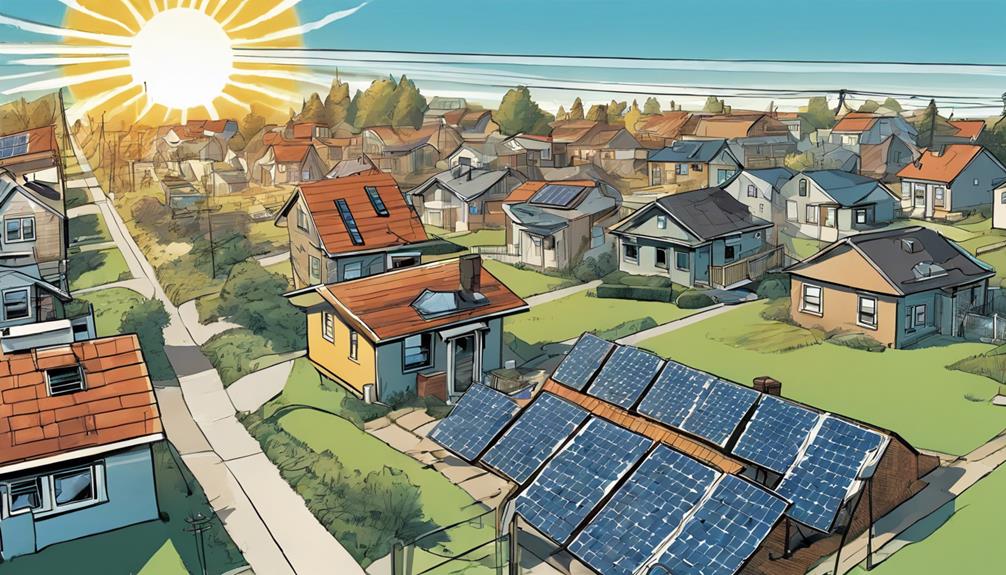Solar farms can produce 250-300 kWh of electricity every day on a single acre, displaying remarkable efficiency. This highlights the significant role solar power plays in clean energy production and sustainability. It's fascinating to see how much power can be generated from a relatively small land area. Further information about solar farms, their impact, and additional ways to maximize their efficiency and output are available in the detailed research findings. Feel free to explore the various aspects related to solar energy production and its implications for a greener future.
Key Takeaways
- Solar farms generate 250-300 kWh of electricity per day on 1 acre.
- Efficiency varies based on panel density and quality.
- Increasing energy production efficiency is a priority.
- Location, sunlight, and panel quality impact energy output.
- Innovations aim to maximize energy production per acre.
Solar Farm Overview and Power Production
Solar farms typically generate between 250-300 kWh of electricity per day on just 1 acre of land. This impressive energy production per acre showcases the efficiency and potential of solar power.
These farms play an important role in sustainable energy generation, harnessing the power of sunlight to produce electricity for various uses.
The energy production of a solar farm per acre is influenced by factors such as location, sunlight exposure, and the efficiency of the solar panels used. Understanding these variables is essential in maximizing the power output of each acre of land dedicated to solar energy production.
By optimizing these factors, solar farms can increase their energy production capacity and contribute even more significantly to the renewable energy sector.
As technology advances and solar panel efficiency improves, the energy production of solar farms per acre is expected to increase further, making them even more profitable and essential in the shift towards clean energy sources.
Solar Panel Density and Financial Aspects
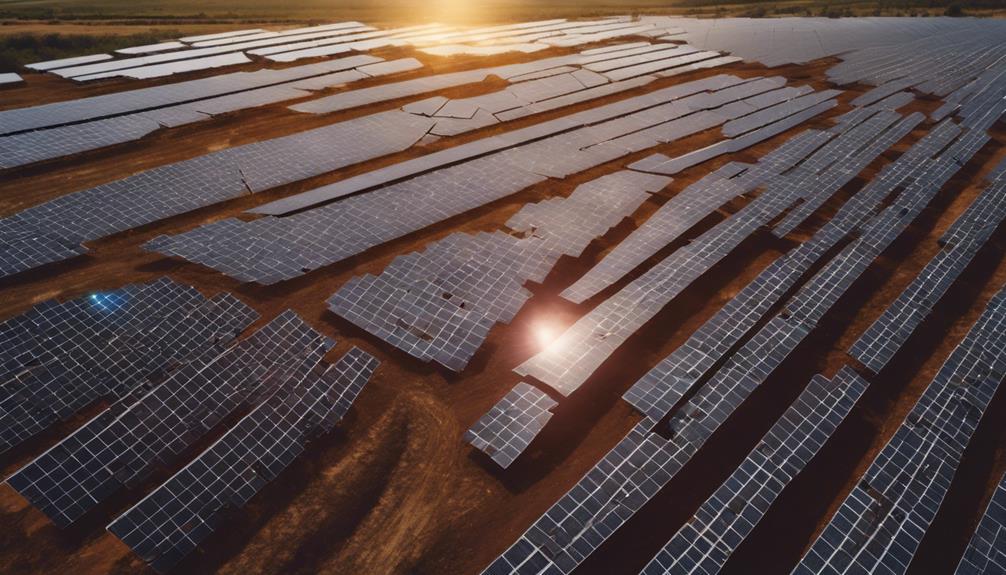
With an estimated 2,500 solar panels fitting in one acre, the financial aspects of solar panel density are important to take into account for maximizing revenue from solar farms. The efficiency of solar panels directly impacts the income generated from each acre of solar panels. Higher efficiency panels can produce more electricity, leading to increased revenue.
Factors like the location of the solar farm, the amount of sunlight it receives, and the local electricity rates also influence the profitability of solar farms per acre.
When considering the financial aspects, it's essential to factor in the initial costs of installing the solar panels, as well as ongoing expenses such as maintenance, insurance, and leasing fees. While revenue from one acre of solar panels can average around $98,400 per year, actual profits may vary based on these additional costs.
Solar Farm Costs, Returns, and Profitability Factors
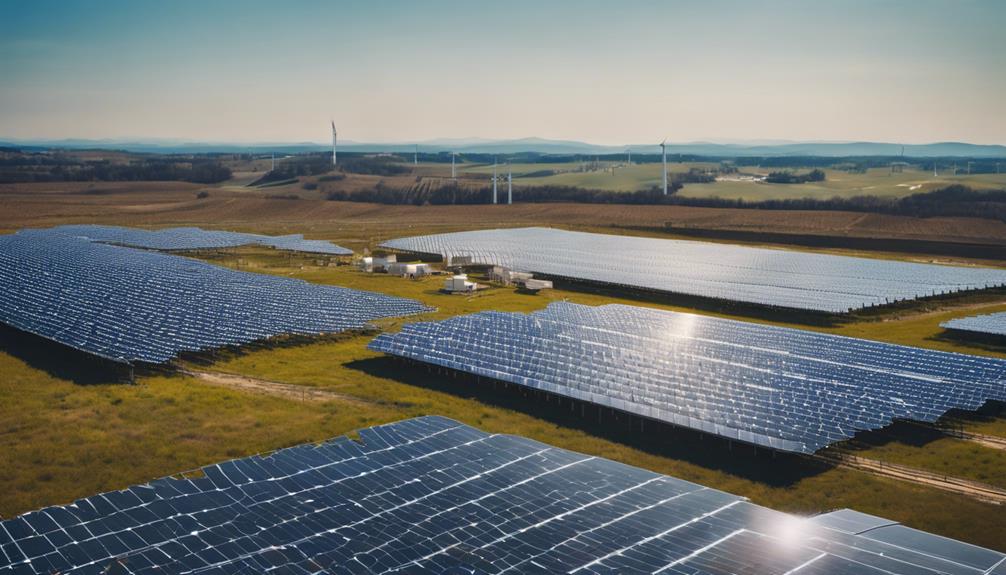
You'll explore the cost and revenue analysis of solar farms, diving into factors that influence profitability and the return on investment (ROI).
Understanding these aspects is essential to grasp the financial viability and potential returns of investing in solar energy.
Keep an eye on the key points of cost, revenue, profitability factors, and ROI to make informed decisions regarding solar farm investments.
Cost and Revenue Analysis
Factors such as location, electricity prices, and incentives play a pivotal role in determining the profitability of a solar farm. The revenue generated per acre of solar panels can be substantial, with an average of $98,400 per year. However, the cost per acre for establishing a solar farm can vary significantly, with the average cost for a 50 MW solar farm being around $200 million. Solar panel efficiency also plays an important role in determining the revenue potential of a solar farm. The table below summarizes key cost and revenue aspects of solar farms:
| Aspect | Average Value | Impact on Profitability |
|---|---|---|
| Revenue Generated | $98,400/year | High revenue potential |
| Cost per Acre | $200 million | Substantial initial investment |
| Solar Panel Efficiency | Varies | Directly influences revenue |
Understanding these factors is crucial for evaluating the economic feasibility and profitability of investing in solar farms.
Profitability Factors
To comprehend the profitability of solar farms, consider the costs, returns, and key factors influencing their financial success. Solar farms have the potential to generate an average revenue of approximately $98,400 per year per acre.
Factors such as location, sunlight availability, and electricity rates play a pivotal role in determining the profitability of solar farms. Return on investment (ROI) for these farms typically ranges from 6% to 11%.
For instance, a 1 MW solar farm producing 24,000 kWh/day could result in an annual revenue of $525,600. The profitability of solar farms is significantly impacted by various factors including location, electricity prices, and available incentives.
Therefore, understanding these profitability factors is essential when considering investing in solar farms to guarantee a successful and financially viable venture in the renewable energy sector.
Return on Investment
Solar farm costs, returns, and profitability factors are key components in evaluating the return on investment in solar energy ventures. The return on investment (ROI) for a solar farm typically ranges from 6% to 11%, depending on factors such as location, electricity prices, and available incentives.
A 1 MW solar farm that produces 24,000 kWh/day could generate an annual revenue of approximately $525,600. However, the cost of establishing a solar farm per acre can vary significantly, with an average 50 MW solar farm potentially costing around $200 million.
It's vital to consider additional factors like maintenance, insurance, and leasing costs, as they can impact the actual revenue and overall profitability of the solar farm. Moreover, the efficiency of solar panels is a crucial factor in determining the income generated by the solar farm.
When evaluating the viability of investing in solar energy, analyzing the ROI alongside these factors becomes essential for making informed decisions.
Strategies and Diversification for Increased Income
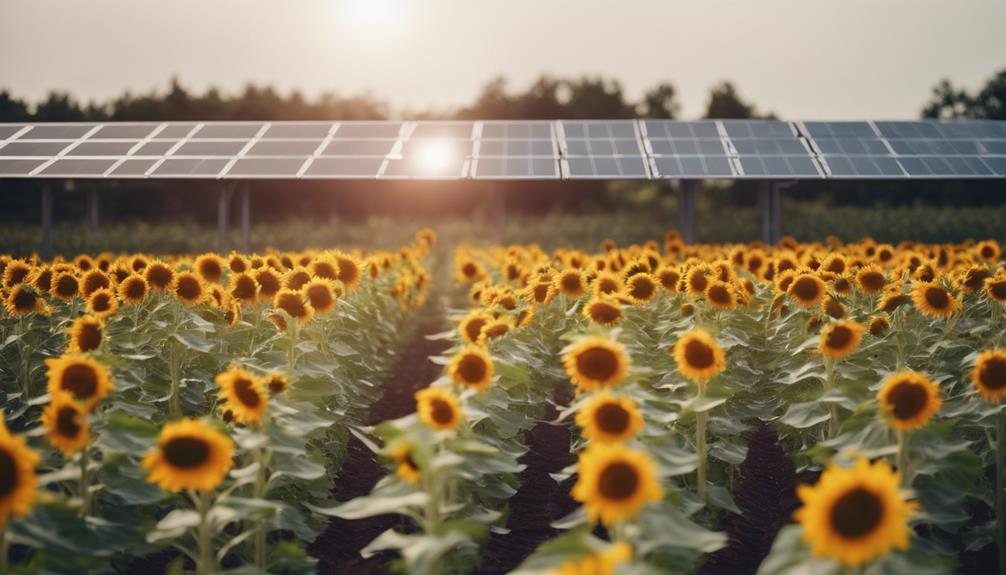
By exploring various strategies and diversifying your approach, you can substantially increase income from solar farm operations. Implementing high-efficiency panels and optimizing their orientation can boost income per acre, while adding energy storage systems enhances the overall profitability. Diversifying activities, such as entering fixed-price energy sales agreements and exploring new markets, can provide stable income streams and increase revenue for your solar farm. Optimizing maintenance practices and reducing costs are key strategies to maximize profitability in this industry.
| Strategies | Benefits |
|---|---|
| High-efficiency panels | Increase income per acre |
| Energy storage systems | Boost overall profitability |
| Fixed-price agreements | Provide stable income streams |
| Diversifying activities | Explore new markets for revenue growth |
Solar Batteries Longevity and PowMr Information

Factors like temperature, cycling frequency, and maintenance practices profoundly impact the lifespan of solar batteries, with proper care potentially extending their longevity from 5 to 15 years. Advanced battery technologies now offer increased durability and performance, enhancing overall efficiency.
When considering solar batteries, PowMr provides valuable information on solar inverters, batteries, and related products. By utilizing PowMr resources, users can optimize their solar energy systems for maximum output and longevity. PowMr's website offers user guides, deals, giveaways, and accepts various payment methods, ensuring a convenient experience for customers.
Understanding the factors influencing solar battery lifespan and utilizing PowMr's guidance can significantly improve the efficiency and sustainability of solar energy systems. Be sure to explore PowMr's offerings to make informed decisions and maximize the benefits of solar energy technology.
Solar Land Footprint Analysis
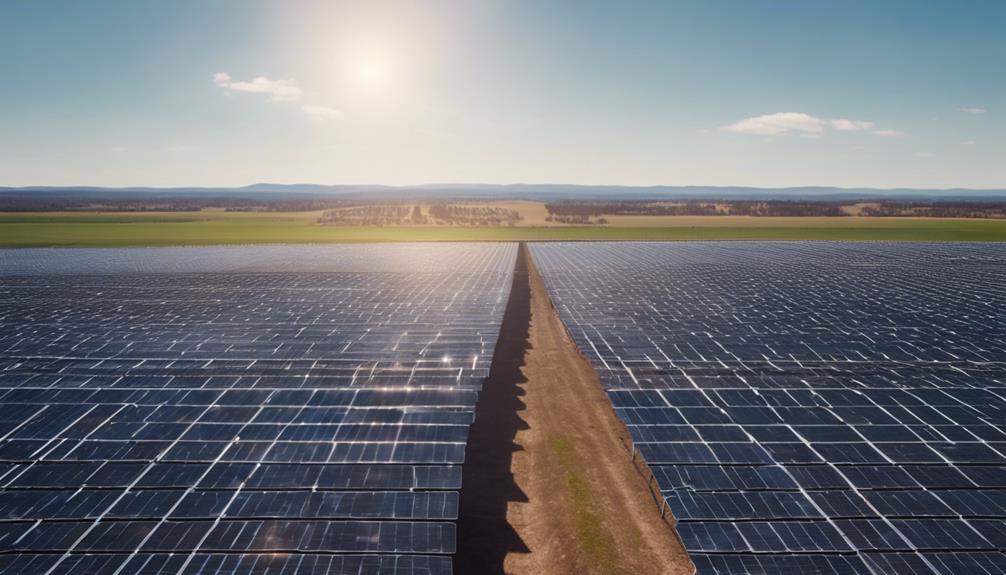
Understanding the impact of solar land footprint analysis is essential for optimizing the development of solar farms.
Solar farms, despite their energy output, occupy minimal land, with most projects using less than 0.5% of a county's land. This low land use is in line with local regulations on environmental protection and land use.
By analyzing solar land footprint, developers can address concerns about land usage and work towards maximizing the efficiency of solar farm installations.
In the United States, approximately one-third of counties have principal-use solar installations, demonstrating the widespread adoption of solar energy without significant land impact.
On average, solar land use represents only 0.23% of a county's land footprint, indicating a minimal overall effect on land usage.
This analysis underscores the efficiency of solar farms in generating energy while utilizing land resources effectively and sustainably.
Frequently Asked Questions
How Much Can a 1 Acre Solar Farm Produce?
You can expect a 1 acre solar farm to produce a significant amount of energy. The output varies based on factors like panel efficiency and sunlight exposure. On average, it can generate around 250-300 kWh per day.
How Many Acres Is a 5 MW Solar Farm?
To determine the acreage for a 5 MW solar farm, consider factors like panel efficiency and layout. Optimizing land use is key. Solar exposure, equipment selection, and site characteristics affect the needed acreage. Plan wisely for efficiency.
How Much Electricity Do Solar Farms Generate?
When you consider solar farms, think of them as energy powerhouses. They can generate ample electricity, with utility-scale farms producing up to 1 GW – that's enough to power a large city!
Is 20 Acres Enough for a Solar Farm?
Yes, 20 acres is adequate for a solar farm. Factors like sunlight exposure and technology impact energy production. On average, a 20-acre solar farm can generate 85,000-170,000 kWh daily, with income ranging from $425,000 to $850,000 annually.
How Can Troubleshooting Issues Impact the Energy Production of Solar Farms Per Acre?
When it comes to solar farm issue troubleshooting, addressing any technical problems promptly is crucial to maintaining the energy production of solar farms per acre. A delay in identifying and resolving issues can lead to decreased efficiency and loss of revenue for solar farm operators.
Conclusion
Overall, solar farms can be a profitable and sustainable investment, producing ample energy per acre. With proper planning and management, you can maximize your returns and reduce your carbon footprint.
Remember, diversifying your income streams and optimizing your solar panel density can lead to increased profitability.
So, don't hesitate to explore the possibilities and harness the power of the sun for a brighter future.
